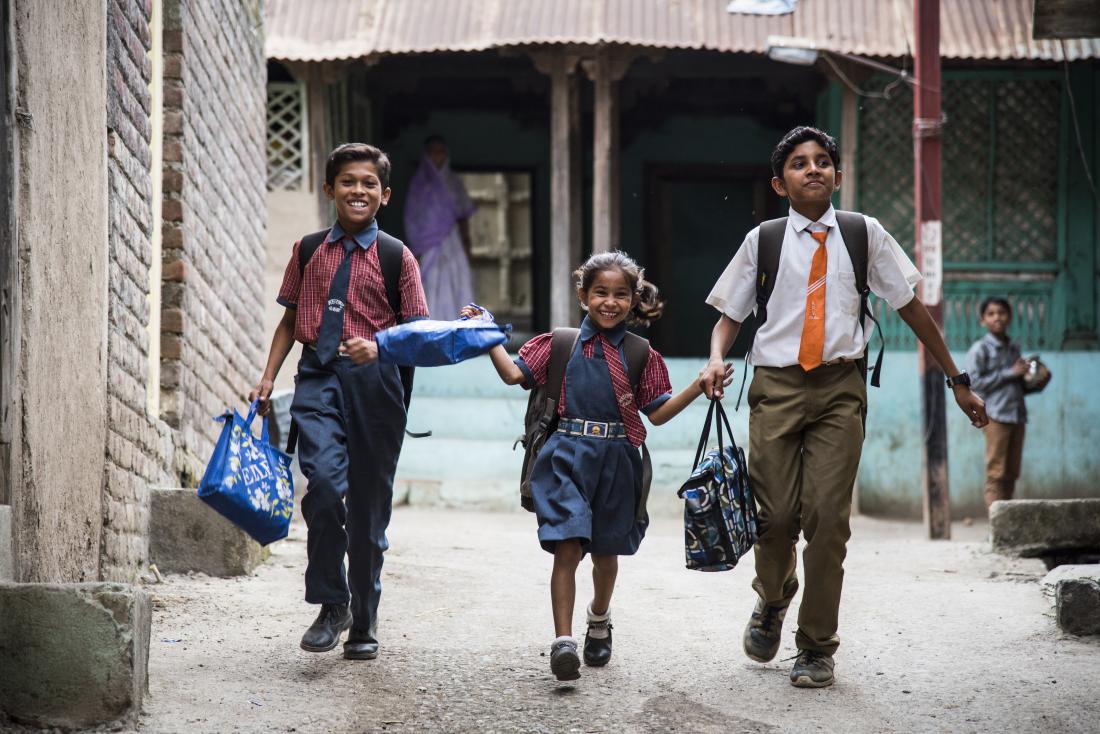India’s Saharsh Happiness Curriculum to Improve Youth Mental Health, Learning, and Development
- Children
- Primary schools
- Students
- Youth
- Student learning
- Self-esteem/self-efficacy
- Attitudes and norms
- Mental health
- Socio-emotional development
- Soft skills
- Soft skills
- Pedagogical innovation
- Psychosocial support
Poor mental health, particularly among youth, can have serious effects on one’s cognitive and social-emotional development. Through a randomized evaluation in Tripura, India, in partnership with the Labhya Foundation, researchers are examining the impact of a socioemotional learning curriculum on student mental health, academic achievement, and other social outcomes.
الموضوع الأساسي
Because children’s brains develop at a fast pace and adolescence is a critical period for acquiring socio-emotional skills, poor mental health during youth can have negative consequences on academic outcomes and longer-term educational and career outcomes. At the same time, improving children’s mental health and developing holistic skills can cultivate skills that contribute to success throughout life. These realities underscore the need for mental health interventions for youth that nurture socio-emotional skills and support students’ learning. Can daily mindfulness practices and holistic skills activities improve students’ mental health and educational outcomes?
سياق التقييم
Youth mental health is a critical issue in India today, with about 25 percent of adolescents experiencing depression. To address the mental health needs of its youth, the Indian states of Delhi and Uttarakhand adopted a “Happiness Curriculum.”
The state of Tripura in northeast India, the setting of the evaluation, was the third in the country to roll out a happiness curriculum statewide when they introduced the Saharsh curriculum in 2023. About thirty percent of Tripura’s population comprises historically underserved tribal groups, and most public-school students come from low-income households. In 2022, only 66 percent of 8th grade students in Tripura could read at a 2nd grade level.1
The Labhya Foundation is a nonprofit in India with a mission to equip children experiencing poverty with the social and emotional skills needed to enhance learning and quality of life.2 Co-developed by the Labhya Foundation and endorsed by the Dalai Lama, the Saharsh curriculum is an educational program for socioemotional learning created by experts in human development. The curriculum is intended to develop soft skills such as emotional regulation, teamwork, and communication. It features two main components: a happiness class and guided mindfulness meditation.
The happiness class takes place in the first half hour of each school day, beginning with a short, guided meditation followed by a group activity (such as storytelling and reflection), class discussion, and a final mindfulness session. Once a week, a longer guided mindfulness meditation session takes the place of the 30-minute happiness class. The time set aside for the daily classes replaces time usually spent on standard subjects such as math, science, and language. Government teachers are trained by the Labhya Foundation to administer the curriculum.

معلومات تفصيلية عن التدخل
In collaboration with the Labhya Foundation and the Tripura government, researchers conducted a randomized evaluation in West Tripura to test the impact of the Happiness Curriculum on students’ mental health, academic performance, and socioemotional well-being. Students in grades 1-8 from 100 randomly selected primary schools, equaling 4,000 students and 800 grade levels, were randomly assigned, by grade level, to one of three groups:
- Full Happiness Curriculum group: Students assigned to this group received all components of the Saharsh curriculum.
- Mindfulness only group: Students assigned to this group received one weekly 30-minute guided mindfulness meditation session and daily morning meditations.
- Comparison group: Students in grade levels assigned to this group did not receive the Happiness Curriculum in any form.
Throughout the evaluation, students participated in surveys designed to measure their mental health, wellness, academic, and social outcomes. Researchers also used the students’ test scores and grades to measure learning and attendance. Researchers assessed teachers’ attitudes, comprehension, and mental health through additional surveys. The data collected from teachers was used to determine the effects of teacher-related factors – such as buy-in, comprehension, and mental health – on students’ outcomes.
النتائج والدروس المستفادة بشأن السياسات
Research ongoing; results forthcoming.

